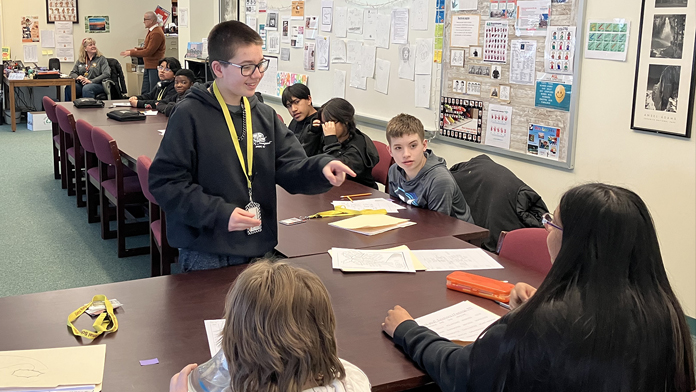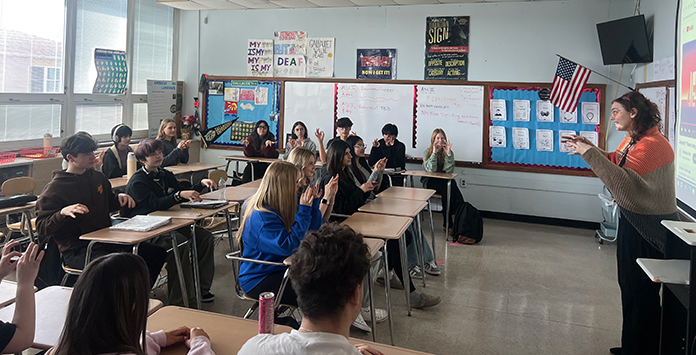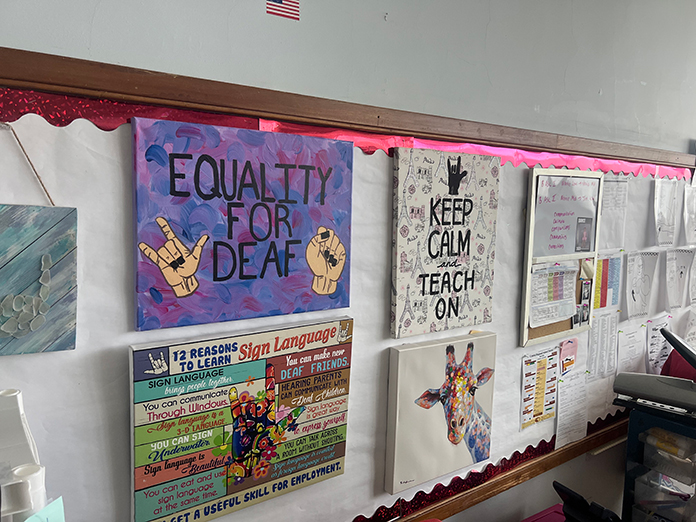
BERKELEY – When you pass through the Central Regional Middle School library, there’s a sign telling you to be quiet. But there are ways to communicate without making a sound.
Students at both the middle and high schools have been learning American Sign Language to better interact with those who are Deaf or Hard of Hearing.
The idea started as a club during the height of the pandemic and now it has grown to a 10-week program. For one marking period, kids can choose this from other 10-week options, Assistant Principal Kevin Buscio said.
A classroom grows out of the back of the middle school library. The desks are situated in a U shape, so that everyone can see each other’s faces and hands. Seeing the gestures is done for obvious reasons, but the facial features add to the meaning.
Jennifer Lozada taught the class. She would sometimes slip into full sentences where the students knew most of the signs and they would have to pick up the rest from context clues.

Part of taking attendance was that the class had to spell the absent student’s name with signs. They did a basic math puzzle and signed the numbers involved.
One student went around to each classmate and signed “How are you?” The other students signed back such things as “happy,” “sad,” “nervous” and even “invisible.”
They broke into small groups to communicate with each other. “Sign language is more fun for me,” one student said.
“It’s interactive. We play games,” another said.

Sometimes, they’ll have visitors, such as Dr. Isidore (Dr. Izzy) Kirsh from Garden State Hearing And Balance Center. They’ve also hosted a Deaf couple who taught lessons and answered questions.
Sometimes, they’ll be the visitors. They have traveled to Ocean Gate and Island Heights elementary schools and prepared a lesson for the students. This not only reinforces their own learning – because being able to teach someone a subject requires a high level of understanding – but it also gets the younger kids excited about learning this subject when they get to the middle school.

In ASL1, the subjects involve basic vocabulary, fingerspelling, and numbers. The themes of personal life, family life, school life, and social life are explored. More complex sentences and concepts are taught in ASL2, with the intent to broaden their development of American Sign Language and give them the tools to communicate more detailed concepts.







